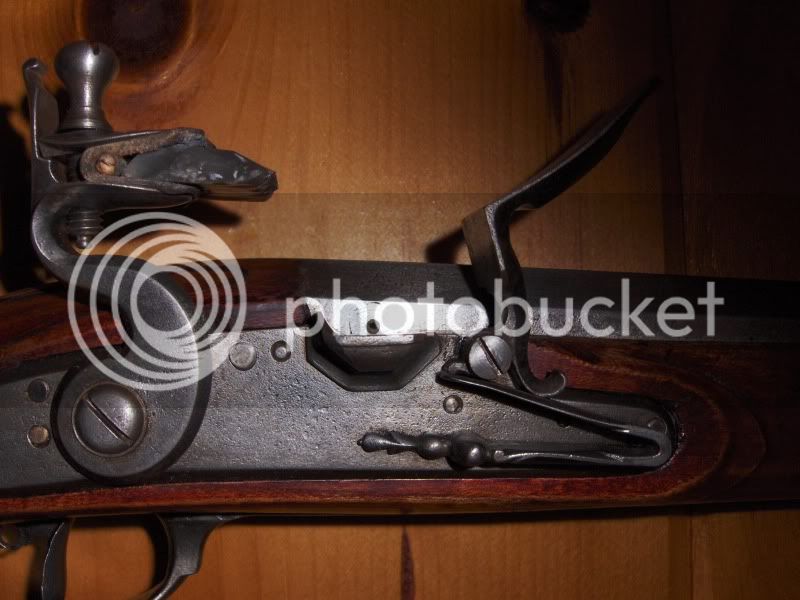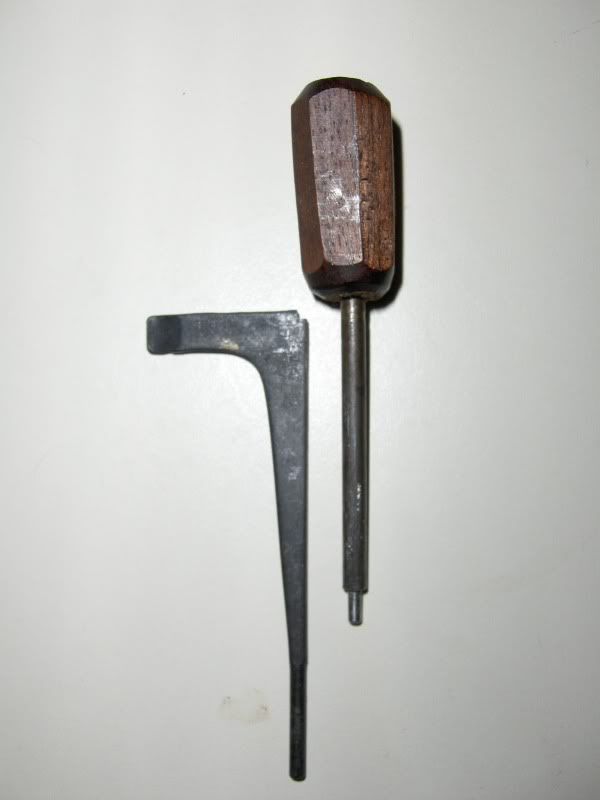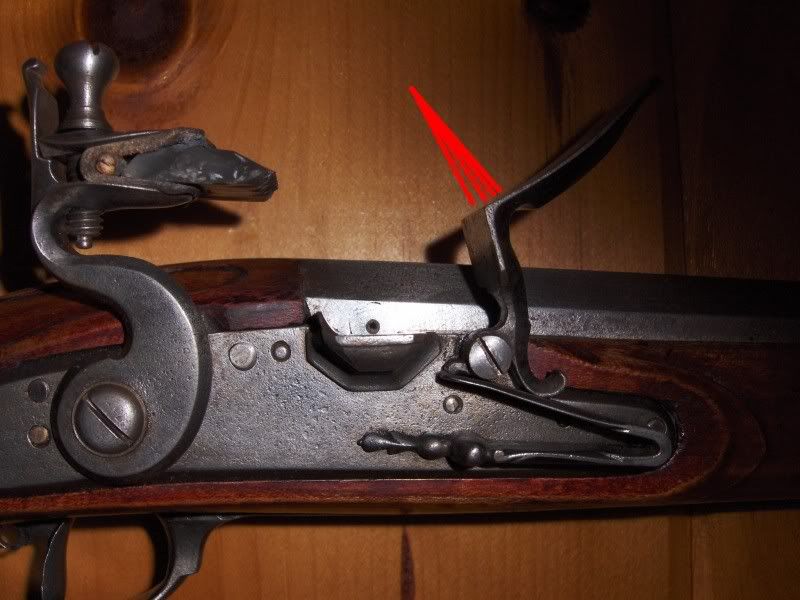You can knapp the flint right in the jaws of your cock. With the gun unloaded, and NO POwder in the flashpan, cradle the gun in your left arm. Use the inside edge of your left thumb to LIFT UP the closed frizzen, while you manually lower the cock so that the flint edge will strike the face of the frizzen at the " HEEL " of the frizzen. This is that last 1/4" of steel where the "L-shaped bend" occurs. Think of the frizzen as a human foot. The heel,-- or " achilles heel, to be exact"--- is located at the back of your foot, behind the horizontal plane of your foot.
Now, make sure that NO PART of your left thumb extend beyond the face of your frizzen where it will be cut by your flint, and HOLD the frizzen open at that position.
Now, Cock the hammer back to full cock, and pull the trigger.
The edge of the flint will strike the heel at a steeper angle, that chips off an edge across the width of the frizzen, and from the UNDERSIDE of the flint. This results in a new, sharp edge.
Knapping takes advantage of the natural fracture lines of silicate rocks, like flint. Flint fractures along predictable angles. By using the heel of the frizzen to create a new edge, you get a sharp, new edge over the entire width of the flint, so that all the flint is cutting steel off the face of the frizzen when the lock is fired.
As the flint wears down, you need to move the flint forward. Otherwise, you reach a point where the flint won't pop open the frizzen timely. You want about a 1/16"-1/8" gap between the front edge of the flint, and the face of the closed frizzen, when the hammer is set on half cock.
If when mounting the flint in the jaws, the final tightening causes the flint to skew sideways, just go ahead and knapp it on the heel as described and you will have your squared, new edge.
Use a wood twig to wedge behind the flint to keep it mounted forward in our flint wrap. Otherwise, the constant blows on the flint will move it back rearward again.
WADR to the members who use separate tools and hammers to knapp their flints, those tools are simply not necessary.
Oh, your flint- the one in the picture, has an obvious " Hump " on the top of the flint. You want a flint that has two parallel sides-- top and bottom-- rather than one with a hump. The hump is causing the flint to LIFT up in that soft leather flint wrap, and that is causing the flint to begin to gouge the face of your frizzen.
You want the flint's edge to strike the face of the frizzen at 60 degrees, so that you scrape steel off the frizzen, rather than gouging the face. Gouges, when they are deep enough, will begin destroying the edge of your flint( eating flints!) and slow your ignition considerably. YOu can use cheap diamond "hones" you can buy at Harbor Freight, to remove that " hump " on the flint, and make a flat surface that is parallel to the bottom of the flint fairly quicly. Or buy a " mizzy wheel" grinding wheel for a high speed hand drill or dremel tool. bot work, altho the later throws up a lot of silicate dust, and should not be used without mask to protect your lungs from breathing in that dust.( silicosis) :thumbsup:











